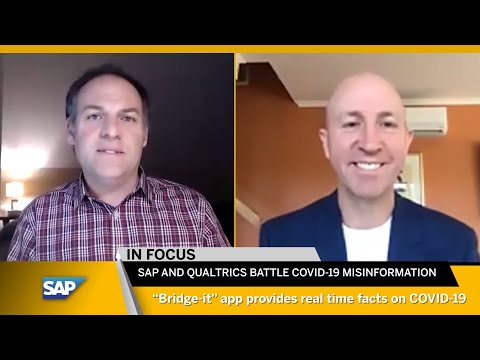People across the world are relying on a wide variety of online sources and media platforms to consume news and information about COVID-19. But with the information overload surrounding this topic, distinguishing facts from fiction has become especially challenging.
As the virus spreads, so does fake news. From conspiracy theories to wild speculation about government plans and even possibly harmful unproven “cures,” disinformation is flooding the Internet and posing a serious threat to public health.
As a result, the United Nations (UN) Secretary-General Antonio Guterres warned that the world is facing a catastrophic epidemic of misinformation about COVID-19, calling it an epidemic of misinformation. In a message posted on his Twitter account, Guterres said that “to overcome the coronavirus, we need to urgently promote facts & science, hope & solidarity over despair & division.”

In response to the evolving issue, the UN is advancing communications efforts to make sure people have the latest and most credible information about the virus. The World Health Organization (WHO) has created a series of COVID-19 mythbusters and is working with search and media giants like Facebook, Google, Pinterest, Twitter, TikTok, YouTube, and others to help counter the spread of rumors, which include misinformation like 5G mobile networks spread the virus; that it cannot survive in the hot weather; that drinking methanol, ethanol, or bleach prevent or cure it; and that consuming spicy food, garlic, and special herbs can prevent infection.
At this crucial moment, tech companies are feeling the pinch. They face an unprecedented challenge: How do they strike the delicate balance between free speech and misinformation, and only provide information that will help the global community get through the pandemic in the best way?
New App Cuts Through Fake News with Real-Time Facts on COVID-19
To help address the flood of misinformation, the Innovation office in SAP Asia Pacific Japan (SAP APJ) stepped up during early stages of the pandemic. In only two weeks, the team developed a chatbot-based application using Experience Management (XM) technology, with the goal of providing users with accurate real-time information on COVID-19, along with personalized guidance on how to cope with the virus.
Called “Bridge-IT,” the app collates news from reliable sources including public health authorities like the WHO and Centers for Disease Control and Prevention (CDC), as well as relevant government agencies at a global and local level.
One SAP customer, a global pharmaceuticals firm, has already rolled out the app for its staff. With access to bespoke data on the number of COVID-19 cases, searchable by hospital location, employees at the firm are now able to predict likely demand for medical supplies and respond accordingly.
“In times of crisis, effectiveness of communication and reliability of information become paramount,” Scott Russell, president of SAP APJ, affirmed.
SAP plans to soon begin rolling out the app globally to customers that have SAP Cloud Platform Enterprise Agreement. It will run on SAP Cloud Platform and be accessed as either a webpage or as an Apple iOS application, free of charge.
Russell believes Bridge-IT is the perfect example of how combining experience data (X-data) with operational data (O-data) is a simple and powerful way to deliver better experiences: “We’re bringing sentiment data and accurate operational data together, and there’s no better way to show the strategy of SAP.”
The app offers the following features:
- Data platform: Powered by SAP Cloud Platform, the data platform collates information from trustworthy global and local sources, as well as specific country, governmen,t and company data to provide as accurate information as possible, in real time.
- Chatbot: Powered by the SAP Conversational AI service, the chatbot provides a user-friendly tool to answer questions and provide access to company-specific FAQs or healthcare guidance.
- Automated guidance tools: Powered by XM solutions from SAP, personalized surveys ask respondents a range of questions about their situation and appropriate resources are provided based on their needs. The survey includes questions about COVID-19 symptoms so that tailored healthcare guidance and resources can be provided based on users’ answers.
- Dashboard: Visualizations of real-time data are provided, such as the impact of COVID-19 on supply and customer-based data, including public sentiment, on SAP Analytics Cloud.



